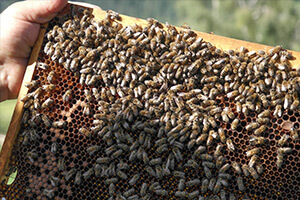
I was talking to my wife recently and was sharing with her my vision for articles for this column. I told her that I was trying to finish up a series of articles for people who are just getting into beekeeping. Most beekeeping books I have read essentially start beekeepers off with information about how to keep bees. However, I thought that most people getting into beekeeping have some very basic questions that the beginner books do not answer. For example, how much will it cost you to get into bees? How do you know if you are allergic to bees? What laws are associated with keeping bees in your area? I have tried, over the last three years, to address those basic beginner topics. In fact, I thought I had covered nearly everything one would need to know before getting into beekeeping. I was telling my wife what I had written about so far and asked her what she thought I may have overlooked. Without thinking too hard, she said “I would want to know how much time keeping bees is going to take.” Of course, she was right. I get that question a lot from people who are just getting starting. Owing to the quick thinking of my wife, I will discuss how much time it will actually take you to be a beekeeper.
How much time does it take to be a beekeeper? The answer to this question, of course, depends on a number of factors. It depends on what beekeeping goals you have. It depends on what resources are available to you. It depends on the climate in your area. It depends on how much help you have managing your colonies. All that said, the single most important factor affecting how much time you will spend working bees is how many colonies you have to manage. Consequently, I will discuss the time and labor associated with keeping bees based on the three recognized types of beekeepers: hobbyist, sideline, and commercial beekeepers.
I have decided to arrange this treatise by first discussing what is a hobbyist, sideline, or commercial beekeeper. I will follow that with an abbreviated discussion of common beekeeping activities in each season, i.e. sharing with you what the typical beekeeper needs to do during a typical season: spring, summer, fall, and winter. I, then, outline the approximate time commitment for each size operation for each season (Table 1).
Types of beekeeping operations
To begin this discussion, there is not hard-and-fast rule about what places a beekeeper in one type of category rather than another. Historically, people have tried to do this based on the number of colonies the given beekeeper owns. This, however, can vary significantly based on how the bees are used, where they are kept, etc. Thus, I favor the definitions that focus on the intent of the colonies, i.e. what they are used to do, versus the simple number of colonies managed. That said, the number of colonies maintained by a beekeeper is roughly correlated with that beekeeper’s use of the colonies. Hobby beekeepers do not keep 1,000 colonies; neither do commercial beekeepers keep 10. So, as much as is possible, I try to suggest a range of colonies one might mange in each category of beekeeping. I also use the intent-based definitions that can be found in the glossary of The ABC & XYZ of Bee Culture, 41st Edition [these are the verbatim definitions I put in quotation marks immediately following the category name – see the reference list for the full citation]. I think these definitions make a lot of sense.
Hobbyist beekeepers: “One who keeps bees for pleasure without intent to profit.” Hobbyist beekeepers usually keep 1 – 10 or so colonies, though some people believe themselves to be hobbyists when keeping as many as 50 colonies. Hobbyist beekeepers, sometimes called “niche pollinators,” usually keep bees for fun, to provide pollination services for their gardens and/or fruit trees, or to make and sell a little bit of honey on the side. That said, hobbyists usually only sell their products or bee services to cover the cost of their hobby. They typically are not keeping bees to generate a significant income. In most cases, hobbyists can expect minimal night and weekend work with their bees, unless, of course, moving bees is involved or if those are the times they elect to work their colonies as part of their regular maintenance.
Sideline beekeepers: “One who keeps bees for monetary gain but has other means of income.” Put simply, these are individuals who generate a legitimate second income by way of keeping bees. I would suggest that the typical sideline beekeeper maintains 100 – 300 colonies. However, there are some sideline beekeepers who keep as many as 500 colonies. Obviously, the more colonies one has, the less the…


